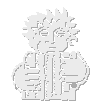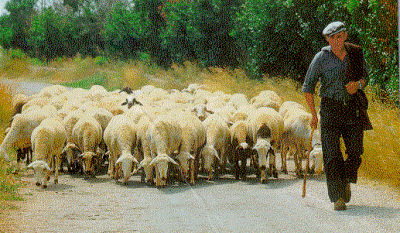 The James Hutton Institute
The James Hutton Institute
This page is no longer updated. The Macaulay Land Use Research Institute joined forces with SCRI on 1 April 2011 to create The James Hutton Institute.
 Livestock systems in farming households in a semiarid arid of Spain
Livestock systems in farming households in a semiarid arid of Spain The neoliberal socio-economic model of development has led to a recession in agriculture in disadvantaged areas. Furthermore, the degeneration of farming in semi-arid areas has been accompanied by changes in the farming systems and the use of grazing areas , which have had a negative effect on the maintenance of the environment. Livestock production is a significant economic activity in these disadvantaged farming areas, but also plays an important role in maintaining the environment and cultural life.
 The long-term viability of the systems, and of the farms that operate them, depends on the level of productivity, at present the most important parameter, and on the total family income. Hence the future of farming activity and the maintenance of the quality of the characteristic landscapes of these regions are seen to be linked, not only with the improvement in viability of farming systems, but also in the existence of policies which can compensate for the poor ability for accumulation of capital experienced by farms in the regions.
The long-term viability of the systems, and of the farms that operate them, depends on the level of productivity, at present the most important parameter, and on the total family income. Hence the future of farming activity and the maintenance of the quality of the characteristic landscapes of these regions are seen to be linked, not only with the improvement in viability of farming systems, but also in the existence of policies which can compensate for the poor ability for accumulation of capital experienced by farms in the regions.
We have been studying the relation between income levels of households, and practical systems, using the rural space hypothesis, in order to pursue the identification, modelling and the analysis of the viability of different production systems in households engaged in sheep-goat and cereal-sheep production, searching for their possible relationships in the economy and the degree of land intensification, and work factors in the households sampled in semi-arid Aragon (Spain) . The present study is contained within a wider doctoral thesis.
The classification of family households was carried out for the differentiation of production systems practised in the central Ebro valley. Relating the structural characteristics with the land productivity, we observed that the households with the highest forage and irrigated agricultural area demonstrated the highest economic productivity with respect to the total utilised surface.
The highest total economic return, and the greatest labour productivity are obtained by dryland and irrigated households with a large flock size, and high availability of land. Flock size, the subsidies received and the presence of the irrigated cereal production explain the favourable results. The lowest incomes are obtained by dry households with small flocks and intermediate land availability , and irrigated households with the lowest utilised agricultural area and all group size flocks . Among the dry farms, there are some which use more economically and structurally extensive systems.
The irrigated households are those which have high economically and structurally intensive systems.
In general we can see that profitable intensification is not directly related with the family revenue level and neither with the utilised agricultural area. Nevertheless, these systems are economically very fragile as they depend on the uncertain future of the protection measures of European agricultural support policy.
24th February 1997